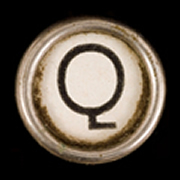
All the preparations have been completed. A fresh layer of white paint covers the concrete curves of all the main roads. The propaganda is in place: flags, billboards and enormous effigies of the benevolent Hen Sun are everywhere. The beggars, homeless and mentally unwell have been rounded up, imprisoned and are now being “reeducated”. Vacant blocks which just a week ago were littered with garbage and filth have been cleaned up and are now home to hundreds of market stalls and a concert stage. The exodus of city dwellers has in no way offset the influx of visitors.
The girth of the great Tonle Sap has grown fat and swollen from months spent gorging thirstily on the flow from the Mekong. The rains have lessened with the turning of the seasons and the upstream flow goes slack. The full moon approaches and soon the accumulated water in the lake will begin to seep back downstream making its way for the shores of the South China Sea. In Cambodia this changing of the tides is cause for celebration. Water Festival (Bon Om Tuk) is here.
The festival runs for three days (Sunday through to Tuesday) during which all roads lead to Phnom Penh, traffic comes to a standstill, the population doubles in size, the city doesn’t sleep and crime goes through the roof.
People as far as the eye can see crowd the banks of Tonle Sap to watch the boat racing. Long boats piloted by a crew of up to eighty compete head to head over 1700 metres. Standing upright the crews row like a chain gang furiously hoeing the ground. In some races there seems to be a large gap in talent. This is most obvious when a one of the provincial teams comes up against a team of expats. Even funnier is watching the expat crew struggling to negotiate the upstream row back to the starting line. After two days of heats the results are tallied and the boats are allocated into one of four divisions for the final day.
This racing gig isn’t risk free: while the surface water flows downstream, the undercurrent still flows upstream meaning that if a boat floods the crew better be strong swimmers. This year, the river claimed the life of one unlucky crew member.
When night falls the long boats are replaced by slow moving barges laden to the rails with neon towers of Buddhist kitsch. A fireworks extravaganza provides a fitting backdrop.
While the boat racing and fireworks provide the water festivals obvious highlights, the real joy is to be found treading the pavement. For many people from the provinces the festival will be their only trip into the city. Every piece of pavement and section of park is covered by straw mats on which families eat, sleep and sell anything and everything: secondhand clothes, cutlery and meat skewers.
Negotiating the streets in certain sections of the city is not for the faint of heart. Our house happened to be located next to the thoroughfare closest to the festival that was still open to traffic. This meant that the normally quite streets around our house provided thousands of truck taxis with a drop off point for streams of festival punters.
We pulled up a bar stool at a high-rise bar/restaurant in order to bear witness to the madness. The intersection near our house (Sihanouk Bvd and Street 51) was becoming the bottleneck to end all bottlenecks. Thousands of punters all traveling in different directions converged to strand Tuk Tuks, Motos and cars. People were at a standstill for hours, food stalls collapsed with the press of bodies and the cabins of Tuk Tuks became legitimate thoroughfares. I couldn’t help but feel guilty about our privileged vantage point, six storey’s above the chaos. This feeling dissipated at the moment of our departure when, in order to get home, we were forced to negotiate that crowd. Who would have thought climbing through a maze of thousand parked motorbikes would be quicker than the road? Apparently the number of visitors this year was far less than previous years; I can’t imagine what the crowds would have been like then.
It is easy to understand why the celebrations have such energy; Tonle Sap is the lifeblood of Cambodia. Outside the comforts of the city most of the population live and die by its whims. Its fertile depths provide the lion’s share (eighty percent) of protein for the population as well as the moisture required to grow the country’s rice. On the flip side, regular floods claim the lives of hundreds and leave tens of thousands homeless every year.
Cambodia is extremely vulnerable to the effects of climate change and the whims of its neighbors. If the sea level were to rise by one meter a large proportion of the country will be underwater leaving more than eight million Cambodians homeless.
China’s phenomenal growth is an even more immediate threat. When the eight hydroelectric schemes which China has planned for the upper reaches of the Mekong come online, the flood flows into the Tonle Sap will be devastated. This will jeopardise the food supply to more than 60 million people.
I am glad to have experienced the exuberance of water festival as who knows how much longer people will be able to celebrate?




